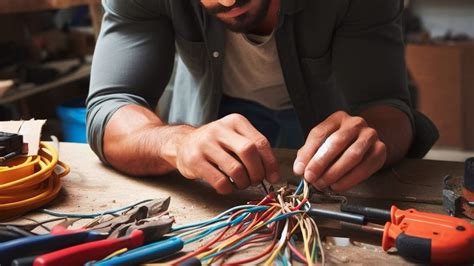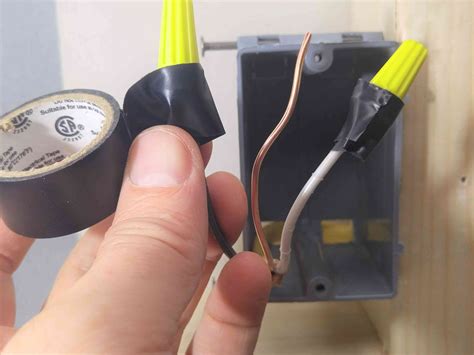electrical junction box terminating conductors Understanding how to terminate electrical wires correctly is key to preventing hazards like electrical fires and improving system reliability. This guide underscores the importance of adhering to best practices and safety . vintage japanese k stamp spelter cast metal cigarette box . Hebei Xianda hot galvanized cast iron elbow manufacturer. Home; . Hebei Xianda dx51 z275 galvanized steel .
0 · how to terminate unused electrical wires
1 · how to terminate old wires
2 · how to terminate electrical wiring
3 · how to terminate electrical connections
4 · how to stop electrical wiring
5 · how to stop electrical connections
6 · how to disconnect unused electrical wires
7 · how to disconnect electrical wires
Vintage 1940s box made in Japan ; Plated cast metal alloy; Sankyo movement, unknown tune ; In good condition with losses to plating - see photos; Size is 5" wide, 4" deep and 3.5" tall. Please view 14 photos at full screen size for best detail. Related items in photos are sold separately.
how to terminate unused electrical wires
In general: Cap and label unused wires, hot and neutral, in junction boxes and in the breaker panel. Leave the grounds connected. Do not remove them from boxes or the panel. Labeling disused wires. Label each end with the location of the other end. IMHO: If a wire is in a box at both ends, and could potentially be energized (eg. a spare conductor) then it needs to be insulated like an energized wire. Understanding how to terminate electrical wires correctly is key to preventing hazards like electrical fires and improving system reliability. This guide underscores the importance of adhering to best practices and safety .
There's no NEC requirement that the end of an abandoned cable, energized or not, be inside a junction box. You can tape or wire nut it off and stuff it inside the wall, if you want to, and that's legal.
Terminations can be within junction boxes, electrical panels, main electrical switchgear, or any other electrical equipment. Before beginning work, circuits must be identified and marked to .
Live wires terminated in a junction box with wire nuts (and a cover on the jbox) are perfectly legal. The only alternative would be to disconnect the wire at the prior junction box .It's acceptable to leave wire in the walls. The only thing you need to do is leave the ends exposed in boxes and wire nut and tape the two legs together. That will indicate to an electrician what's .Terminating electrical connections in a junction box requires a connector capable of insulating the end of each wire without coming loose. Bare copper allows electricity to flow into metal junction boxes and any metallic object connected .
Sec. 300.14 requires you to leave at least 6 in. of free conductor — measured from the point where the conductors enter the box — at each outlet, junction, and switch point for splices or terminations of luminaires or devices.
In general: Cap and label unused wires, hot and neutral, in junction boxes and in the breaker panel. Leave the grounds connected. Do not remove them from boxes or the panel. Labeling disused wires. Label each end with the location of the other end. IMHO: If a wire is in a box at both ends, and could potentially be energized (eg. a spare conductor) then it needs to be insulated like an energized wire.
Understanding how to terminate electrical wires correctly is key to preventing hazards like electrical fires and improving system reliability. This guide underscores the importance of adhering to best practices and safety standards, especially for DIY enthusiasts. Key Takeaways: For terminating unused electrical wires safely: Step 1: Turn off the circuit. Step 2: Test for current. Step 3: Cut and cap wires. Step 4: Match wire connector size. Step 5: Attach connectors carefully. Step 6: Secure ground wires wisely. Step 7: Apply electrical tape for added support. There's no NEC requirement that the end of an abandoned cable, energized or not, be inside a junction box. You can tape or wire nut it off and stuff it inside the wall, if you want to, and that's legal.Terminations can be within junction boxes, electrical panels, main electrical switchgear, or any other electrical equipment. Before beginning work, circuits must be identified and marked to verify that each one is terminated in the correct location.
Live wires terminated in a junction box with wire nuts (and a cover on the jbox) are perfectly legal. The only alternative would be to disconnect the wire at the prior junction box and leave it dead and abandoned in the wall. You’d have to be absolutely sure you killed it for this to be a good idea.It's acceptable to leave wire in the walls. The only thing you need to do is leave the ends exposed in boxes and wire nut and tape the two legs together. That will indicate to an electrician what's going on, and if someone does try to tie into them in the future it will just pop the breaker.

how to terminate old wires
Terminating electrical connections in a junction box requires a connector capable of insulating the end of each wire without coming loose. Bare copper allows electricity to flow into metal junction boxes and any metallic object connected to the junction box. Sec. 300.14 requires you to leave at least 6 in. of free conductor — measured from the point where the conductors enter the box — at each outlet, junction, and switch point for splices or terminations of luminaires or devices. In general: Cap and label unused wires, hot and neutral, in junction boxes and in the breaker panel. Leave the grounds connected. Do not remove them from boxes or the panel. Labeling disused wires. Label each end with the location of the other end. IMHO: If a wire is in a box at both ends, and could potentially be energized (eg. a spare conductor) then it needs to be insulated like an energized wire.
Understanding how to terminate electrical wires correctly is key to preventing hazards like electrical fires and improving system reliability. This guide underscores the importance of adhering to best practices and safety standards, especially for DIY enthusiasts.
Key Takeaways: For terminating unused electrical wires safely: Step 1: Turn off the circuit. Step 2: Test for current. Step 3: Cut and cap wires. Step 4: Match wire connector size. Step 5: Attach connectors carefully. Step 6: Secure ground wires wisely. Step 7: Apply electrical tape for added support. There's no NEC requirement that the end of an abandoned cable, energized or not, be inside a junction box. You can tape or wire nut it off and stuff it inside the wall, if you want to, and that's legal.Terminations can be within junction boxes, electrical panels, main electrical switchgear, or any other electrical equipment. Before beginning work, circuits must be identified and marked to verify that each one is terminated in the correct location. Live wires terminated in a junction box with wire nuts (and a cover on the jbox) are perfectly legal. The only alternative would be to disconnect the wire at the prior junction box and leave it dead and abandoned in the wall. You’d have to be absolutely sure you killed it for this to be a good idea.
It's acceptable to leave wire in the walls. The only thing you need to do is leave the ends exposed in boxes and wire nut and tape the two legs together. That will indicate to an electrician what's going on, and if someone does try to tie into them in the future it will just pop the breaker.Terminating electrical connections in a junction box requires a connector capable of insulating the end of each wire without coming loose. Bare copper allows electricity to flow into metal junction boxes and any metallic object connected to the junction box.

13 talking about this. Viaduct is recognized as the leading provider of ventilation systems for commercial, institutional and high .
electrical junction box terminating conductors|how to disconnect electrical wires